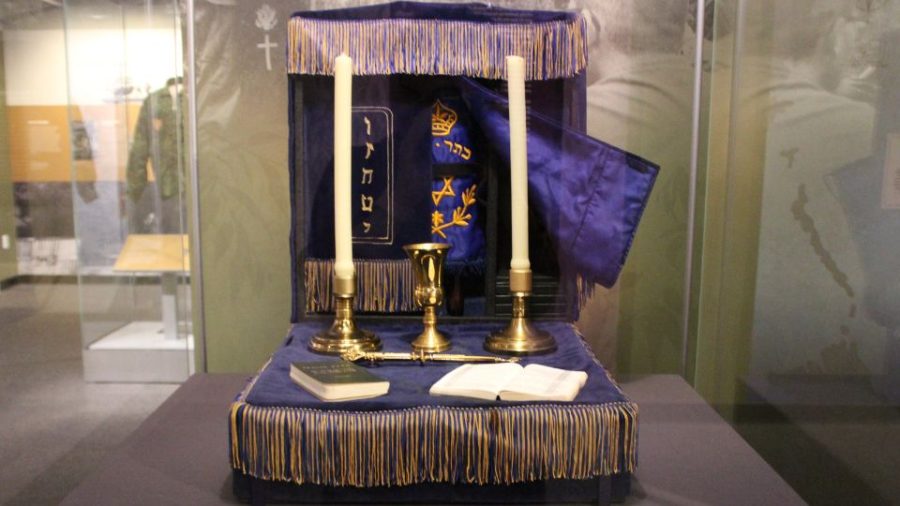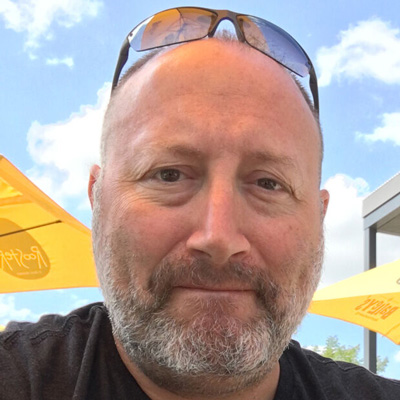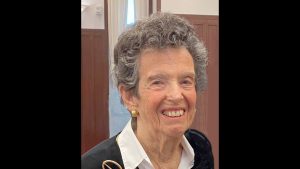This Army chaplain’s kit represents large piece of heroic St. Louis Jewish history
Published November 11, 2022
American Jews have a proud history of serving in the U.S. military dating back to the Revolutionary War. Jews fought in the trenches of France in World War I, on the beaches in the south Pacific, in Normandy, and across Europe. Jews served and fought valiantly in Korea and Vietnam, as well as Iraq and Afghanistan. Today, approximately 10,000 Jewish men and women serve in our country’s military, helping to keep all Americans and our way of life safe.
Like all U.S. citizens entitled to religious freedom, Jewish American servicemen and women deserve opportunities to experience Jewish life, learning and celebration wherever their service takes them and their families. This is why Jewish chaplains are so important.
Rabbis like no other
As we prepare to honor veterans on this upcoming Veteran’s Day Nov. 11, we are shining a well-deserved light on a part of the military experience that deserves more recognition, Jewish military chaplains.
According to U.S. Army records, the first Jewish chaplain to serve was Cantor Michael Mitchell Allen. In 1862, Allen served with the 65th Regiment of the 5th Pennsylvania Cavalry — “Cameron’s Dragoons” — with 1,200 Jewish men, but he served men of all faiths with a non-denominational service on Sundays. Allen, however, resigned under pressure when it was learned he was not Christian, which was against the law.
Next, the regiment elected Rabbi Arnold Fischel. With the support of many others, Fischel lobbied and even traveled to Washington to request and receive a personal audience with President Abraham Lincoln.
On July 17, 1862, qualified non-Christian clergymen were officially allowed to serve when the language was updated to read that regimental chaplains must be “regularly ordained ministers of some religious denomination.” On Sept. 18, 1862, the first official Jewish Army Chaplain, Rabbi Jacob Frankel of Philadelphia’s Roden Shalom Congregation, was commissioned by President Lincoln and served for almost three years.
The Fighting Rabbi from St. Louis
One of the most remarkable heroes of World War I was Elkan C. Voorsanger, “The Fighting Rabbi.”
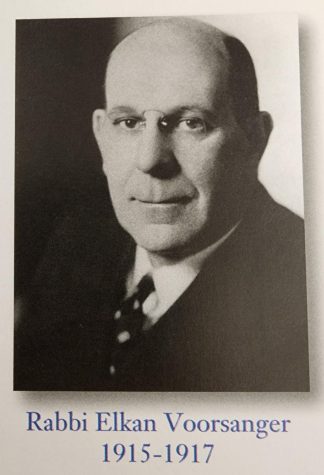
“In the fall of 1915, Rabbi Voorsanger arrived in St. Louis as an associate to Rabbi (Samuel) Sale,” said Congregation Shaare Emeth Rabbi Emeritus Jeffrey Stiffman. “The beginning of U.S. involvement in World War I was of deep concern go both Rabbi Sale and Voorsanger. In February of 1917, Voorsanger left Shaare Emeth and after a brief stay at Barnes Hospital as chaplain, he enlisted in the U.S. Army.”
He was among the first group of 750 Americans to land in France in May 1917.
“While at the front he was commissioned, by a special act of Congress, as an army chaplain. He was the first Jewish chaplain to be commissioned,” said Stiffman.
Voorsanger was assigned to be senior chaplain of the 77th Infantry Division, the famed “melting pot” division. During the Argonne Battle in France, he was wounded while in no-man’s land, under withering enemy fire, administering to the needs of American troops. He was awarded the Purple Heart for wounds incurred there. Other honors included the French Croix de Guerre and the Distinguished Service Medal, as well as a warm commendation from one of his fellow officers who praised his valor along with, “forceful personality and military bearing.”
World War II and beyond
One thousand American rabbis, half the rabbis in the United States, volunteered to serve in the war. Three hundred and eleven Jewish chaplains served on active duty, and many were among the first to encounter Jewish survivors of the Nazi’s extermination campaign.
“So, by Vietnam the Jewish chaplaincy is well established. Jewish chaplains come from all walks of Jewish life. Their responsibilities include not just the religious needs of Jewish service members, but all service members,” said Mike Rugel, director of programs and content at the National Museum of American Jewish Military History. “Rabbis may frequently be working with non-Jews. Those stationed in Vietnam often traveled over huge areas in Vietnam and other parts of Southeast Asia to conduct services and reach as many men and women as possible.”
Rabbi Sheldon Lewis was one such rabbi who was deployed to Vietnam as an Army chaplain. He served from 1970 to 1971 with Jewish personnel in the country’s Central Highlands.
Serving men and women drafted into a morally fraught war with increasing protest back home, he tried to bring a listening ear and the comfort of Jewish tradition to lonely and conflicted people. Fifty years later, Lewis published “Letters Home: A Jewish Chaplain’s Vietnam Memoir” retelling and reliving the drama and agony of serving in that era.
In 2011, the Jewish Chaplains Memorial was dedicated at Arlington National Cemetery. The memorial includes 14 names and dates of rabbis representing the Reform, Conservative and Orthodox branches of Judaism who died while serving the U.S. military during the period from World War II through the Korean War and on to Vietnam.
On display: The Jewish Chaplain’s kit
On Veteran’s Day this year, a new 4,500-square-foot-exhibit is opening at Soldiers Memorial Military Museum in downtown St. Louis. Among the powerful images and 200 artifacts is an authentic Jewish chaplain kit that was used in Southeast Asia.
“Chaplains of all faiths served on a multitude of military bases and remote locations throughout the war zone, often using the hood of their Jeep, ammunition cases, or ration boxes as alters. This portable military chaplain’s kit was used by a Jewish rabbi during the Vietnam War. Its contents, including Torah scrolls (behind the curtains) candles and candle sticks, kiddush cups, yad, and prayer books along with the chaplain’s flag could all be stored inside the collapsible case.
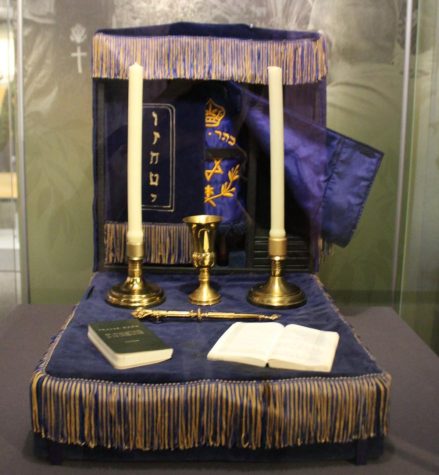
Soldiers Memorial Military Museum is open Wednesday through Sunday, 10:00 am to 5:00 pm. Admission to Soldiers Memorial and ‘Vietnam: At War & At Home is free. Vietnam: At War & At Home is open from Veterans Day, November 11, 2022, to May 27, 2024



